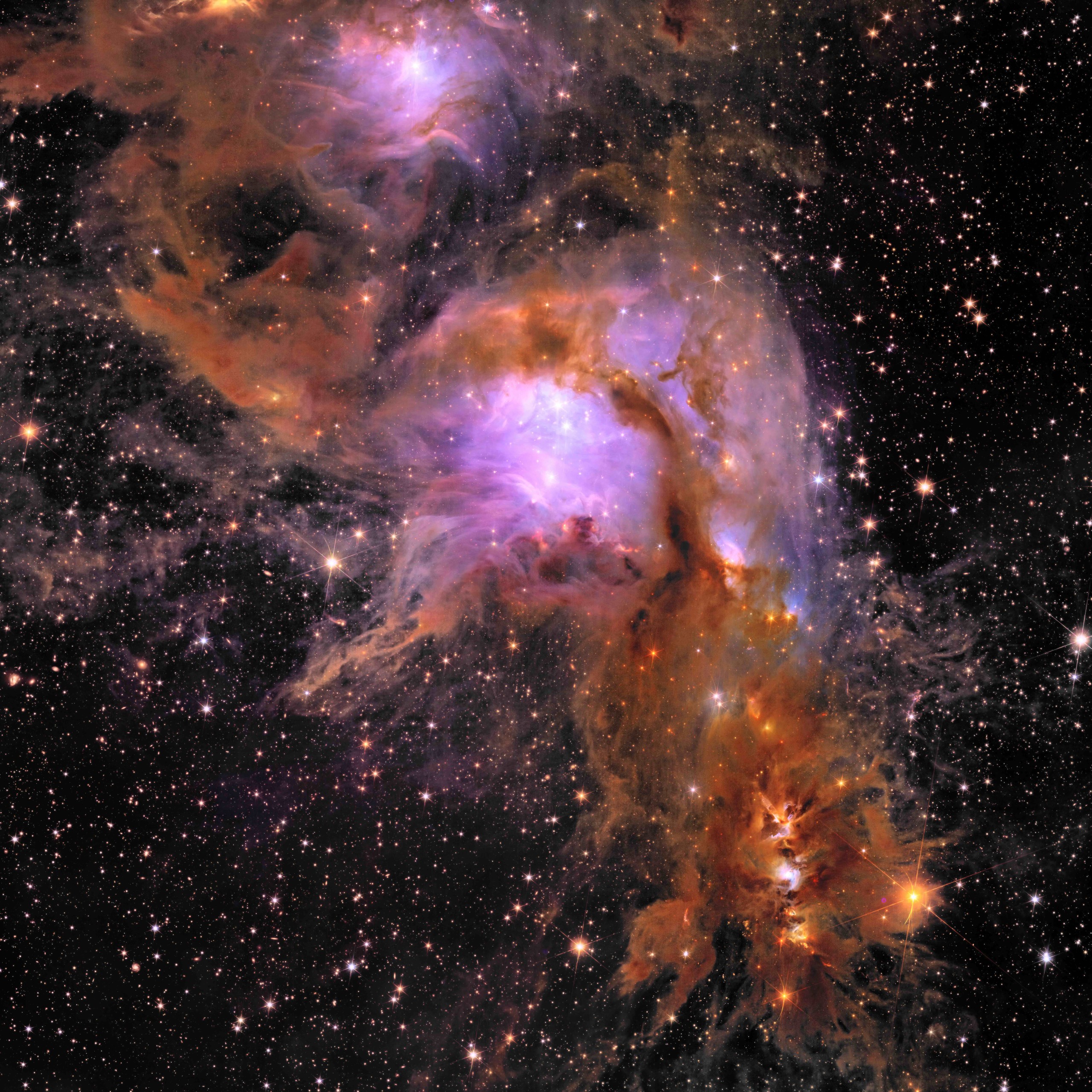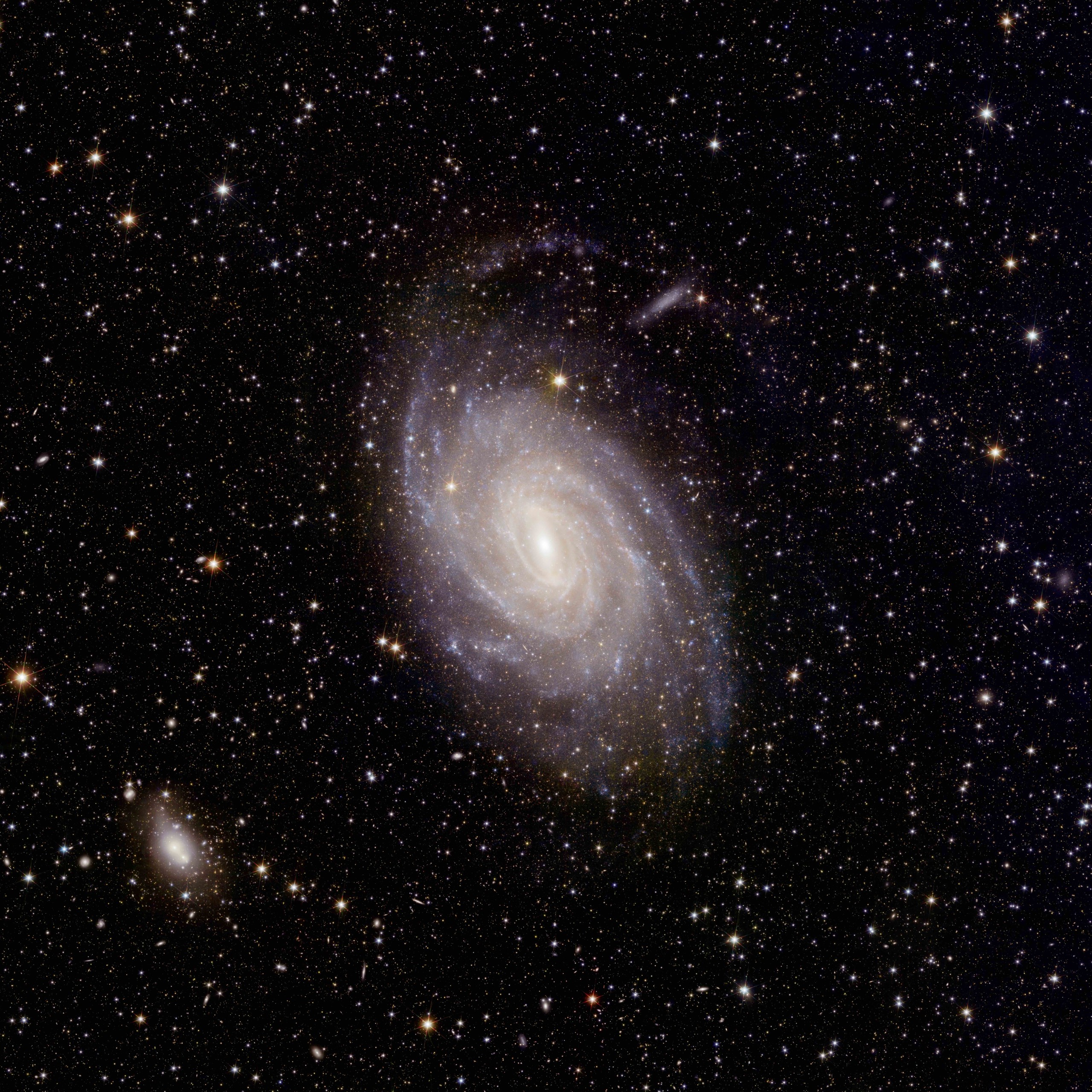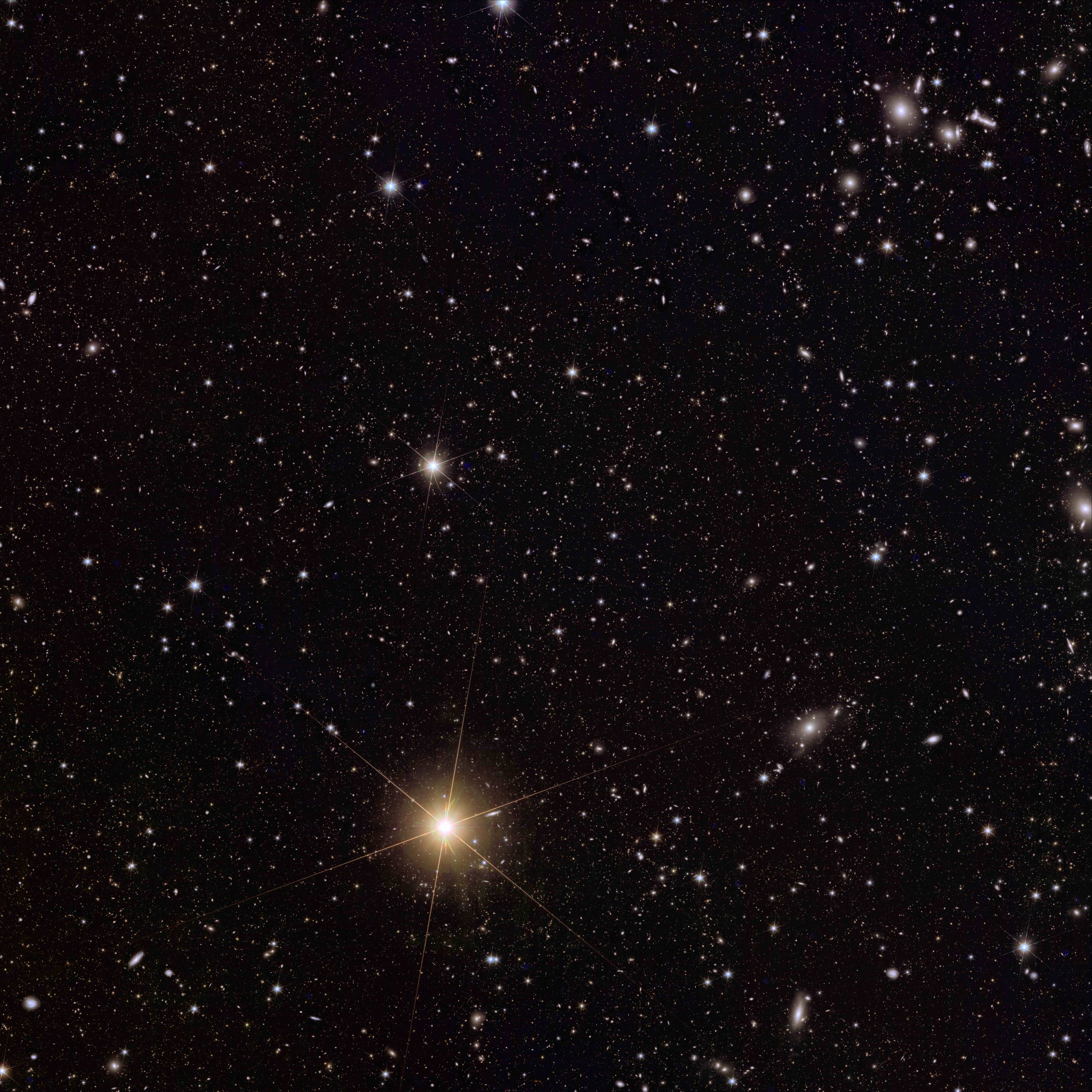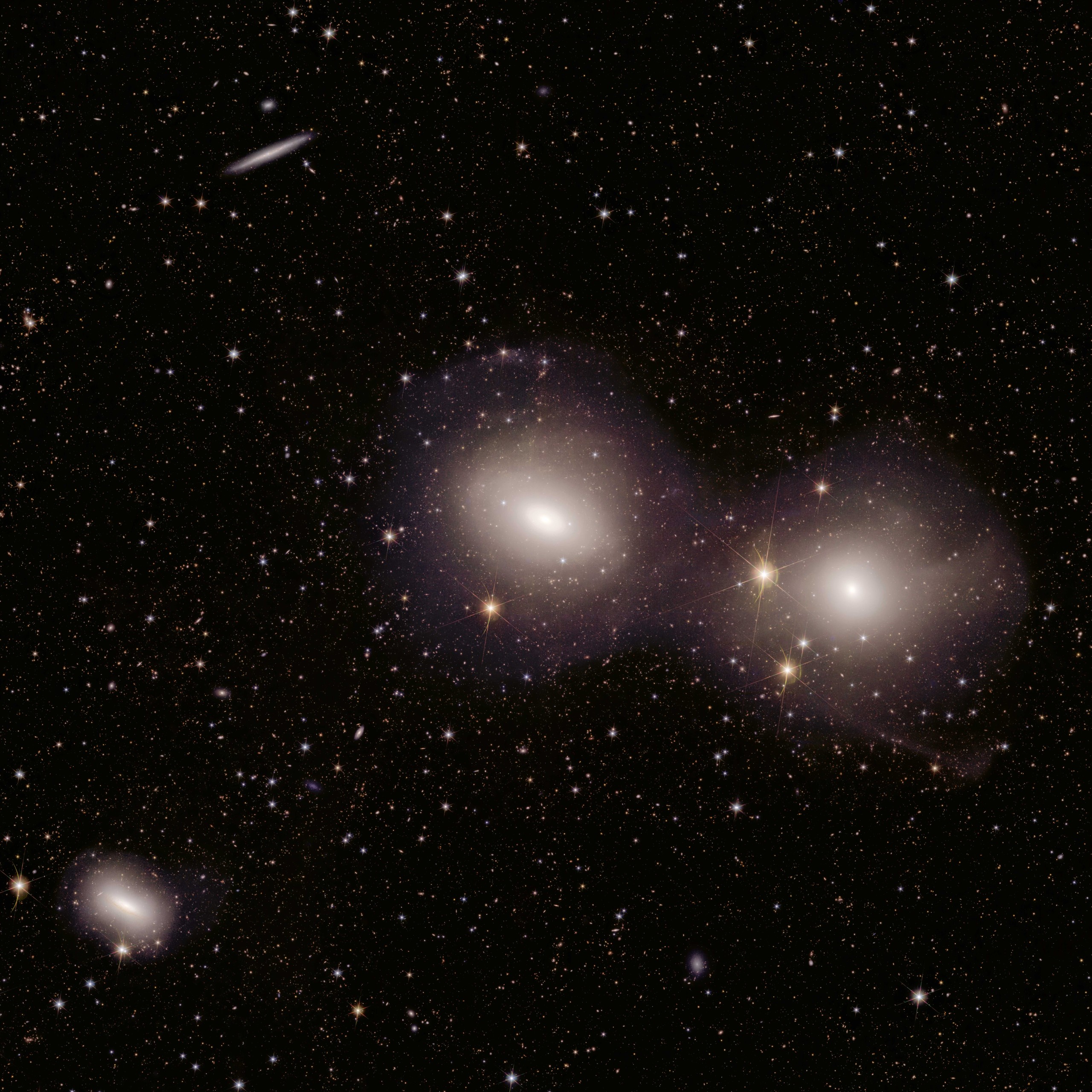
First scientific images Euclid telescope exceed all expectations
Space telescope Euclid is capable of unravelling the secrets of the universe. That is what the images published by ESA today show, according to astronomers working with the telescope's data. The images exceed all expectations. Scientists within the Euclid consortium, including astronomers Henk Hoekstra and Koen Kuijken from Leiden University, will use Euclid to search for rogue planets, use 'lensed' galaxies to study dark matter, and investigate the evolution of the universe.
The new images are part of Euclid's so-called Early Release Observations and are accompanied by the mission's first scientific data, also published today, and ten scientific papers due to be published soon. The first scientific data were published less than a year after the space telescope was launched and about six months after Euclid sent its first full-colour images of the universe to Earth.
Early observations of Euclid
‘Euclid is a unique, pioneering mission and these are the first datasets to be made public - it's an important milestone,’ said Valeria Pettorino, ESA's Euclid Project Scientist. The images and associated scientific findings are impressively diverse in terms of the objects and distances observed. They encompass a variety of scientific applications, and yet they represent only 24 hours of observations. Koen Kuijken (Leiden Observatory) added: ‘We are eager to get started with Euclid's first large dataset, which we expect in February 2025. These images show once again that the data exceed expectations!’
The full set of early observations focused on 17 astronomical objects, from nearby clouds of gas and dust to distant clusters of galaxies, ahead of Euclid's main goal: to uncover the secrets of the dark cosmos and determine what makes the universe look the way it does today.
-

Abell 2390 -

Messier 78 -

NGC 6744 -

Abell 2764 (and bright star) -

Dorado-groep
What do the new Euclid images tell us?
Abell 2390
Euclid's image of cluster Abell 2390 reveals about 50,000 galaxies, showing how space is distorted by the gravitational pull of all mass, with gigantic curved arcs in the sky - some of which are multiple views of the same distant object. Euclid uses gravitational lensing (in which light coming to us from distant galaxies is deflected and distorted by gravity) as an important technique to investigate the dark universe, indirectly measuring the amount and distribution of dark matter, both in clusters of galaxies and elsewhere. Euclid's excerpt of Abell 2390 shows the light of stars torn away from their parent galaxy and floating in intergalactic space. Viewing this 'intracluster light' is a Euclid specialty, and these stellar rogue stars may allow astronomers to see where dark matter resides.
Messier 78
This image shows Messier 78, a nursery of stars surrounded by interstellar dust. Euclid's infrared camera has looked deep into this nursery, revealing hidden regions of star formation for the first time, mapping the complex filaments of gas and dust in unprecedented detail and exposing newly formed stars and planets. Euclid's instruments can detect objects just a few times the mass of Jupiter, and the infrared camera reveals more than 300,000 new objects in this field of view alone. Scientists use this dataset to study the amount and proportion of stars and smaller (substellar) objects - key to understanding the dynamics of star population formation and change.
NGC 6744
In this image, Euclid shows NGC 6744, an archetype of the galaxy type that currently forms the most stars in the local universe. Euclid's large field of view covers the entire galaxy and captures not only the spiral structure on a larger scale, but also beautiful details on small spatial scales. This includes feathery orbits of dust emerging as 'outliers' from the spiral arms, shown here with incredible clarity. Scientists are using this dataset to understand how dust and gas are associated with star formation, to map how different star populations are distributed across galaxies and where stars are currently being formed, and to unravel the physics behind the structure of spiral galaxies, something that is still not fully understood after decades of study.
Abell 2764 (and bright star)
This view shows the cluster of galaxies Abell 2764 (top right), which consists of hundreds of galaxies within a huge halo of dark matter. Euclid captures many objects in this patch of sky, including background galaxies, more distant clusters and interacting galaxies emitting streams and shells of stars. This complete image of Abell 2764 and its surroundings - obtained thanks to Euclid's wide field of view - allows scientists to pinpoint the cluster's radius and see its edges with distant galaxies still in view. Also visible here is a very bright foreground star that lies within our own galaxy (Beta Phoenicis, a star in the southern sky bright enough to be seen with the naked eye). Euclid is designed to make light scattering as small as possible. As a result, the star causes little disruption, making it possible to capture faint distant galaxies near the line of sight without being blinded by the star's brightness.
Dorado-groep
Here Euclid captures galaxies evolving and merging 'in action' in the Dorado group, with beautiful tidal tails and tidal shields resulting from ongoing interactions. Scientists are using this dataset to study how galaxies evolve, improve models of cosmic history and understand how galaxies are formed within halos of dark matter. This image shows Euclid's versatility: a wide range of galaxies is visible here, from very bright to very faint. Euclid's unique combination of a large field of view, remarkable depth and high spatial resolution allows it to capture small (star clusters), wider (cores of galaxies) and vast (tidal tails) features in a single image.
History of the universe revealed
Euclid will trace the hidden web-like structures of the cosmos, map billions of galaxies in an area of more than a third of the sky, investigate how our universe has formed and evolved over the course of cosmic history, and study the most mysterious of its fundamental components: dark energy and dark matter.
The images taken with Euclid are at least four times sharper than those astronomers can take with ground-based telescopes. They cover large swathes of sky with unparalleled depth, looking far into the distant universe in both visible and infrared light.
While visually stunning, the images are much more than pretty snapshots; they reveal new physical properties of the universe thanks to Euclid's new and unique observing capabilities. A number of accompanying scientific papers from the Euclid consortium appear on the preprint server arXiv, along with five reference papers on the Euclid mission.
Millions of objects in a single day
Euclid's impact will be huge, as described in a comprehensive review article of the mission. Henk Hoekstra (Leiden Observatory), who coordinated the compilation of the article, explains: ‘An average book has 50,000 words, as does the number of galaxies Euclid observes in an image. Hubble has read a bookcase in the past 30 years, while Euclid does that in a few days, reading the entire library in six years. You can learn a lot from the books in a single bookcase, but in a whole library you can discover even more.’
The initial findings show Euclid's ability to find free-floating planets (rogue planets) with masses as small as four times that of Jupiter in star-forming regions, to study the outer regions of star clusters in unprecedented detail and to map different star populations to investigate how galaxies have evolved over time. They also reveal how the space telescope can detect individual star clusters in distant groups and clusters of galaxies, identify new dwarf galaxies, and see the light of stars that have been torn away from their parent galaxies. Euclid produced this catalogue in just one day, identifying more than 11 million objects in visible light and another 5 million in infrared light.
Read the original press release on NOVA's website.
Images: ESA/Euclid/Euclid Consortium/NASA
About Euclid
Euclid is a European mission, built and operated by ESA, with contributions from NASA. The Euclid Consortium - consisting of more than 2,000 scientists from 300 institutes in 15 European countries, the US, Canada and Japan - is responsible for providing the scientific instruments and analysing scientific data. ESA selected Thales Alenia Space as the prime contractor to build the satellite and its service module, while Airbus Defence and Space was chosen to develop the payload module, including the telescope. NASA supplied the detectors of the Near-Infrared Spectrometer and Photometer (NISP). Many Dutch astronomers and data scientists are closely involved in processing and analysing the data generated by Euclid.
